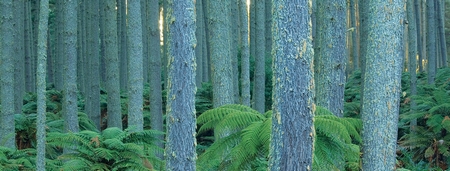Forging partnerships for a successful future

“The contribution of Māori business to New Zealand’s prosperity is one of the most exciting opportunities of our generation.”1
The Government through the Crown-Economic Growth Partnership, He Kai Kei Aku Ringa, has noted the potential of Māori owned assets to add at least another $2.6 billion to the New Zealand economy above business as usual by 20402. In shaping Scion’s Māori Plan in 2013, we supported this outcome as part of our mission. In addition, we included a more personal statement “To enable each Māori land-owner to benefit from the economic, environmental and cultural development of their assets.”3
Achieving these aims is in the interest of both Māori stakeholders and all New Zealanders, since many of the economic challenges and opportunities facing Māori are similar to those facing the rest of New Zealand. The Māori and New Zealand economies are mostly based in the regions and derived from use of land, water and sea-based assets. Sustainable development of biological assets directly for commercial utilisation, or protecting our environment, society and heritage lies at the heart of New Zealand’s value proposition.
At Scion, we modified our approach to working with Māori in 2012/13, built around a philosophical change. Again quoting Matt Pritchard (ibid), “It’s time that we moved past seeing Māori business as a stand-alone sector of the economy, controlling a separate large asset base, and had the courage to turn to Māori culture to understand what it has to add to New Zealand’s success on a world stage.”
The Scion plan has four pillars. The first two (Partnering and Increasing Scion’s Capacity to Work with Māori) were to create a platform for greater mutual understanding and confidence in Scion staff to work with Māori and Māori entities. There is much in common between Māori and the focus for Scion. Forestry and science are both long-term activities that seek to create a more prosperous New Zealand for current and future generations. Partnering with Māori entities, other commercial enterprises and Government is the only way such long-term outcomes can be achieved. This also sits at the heart of the Scion operating model.
The third pillar is Communication. In April this year Scion, in conjunction with Te Puni Kokiri, Forest Owners Research and Development Committee,the Ministry for Primary Industries, and Ministry for Business, Innovation and Employment undertook a forestry hui in Rotorua. The intent of this hui was to enable greater dialogue between Māori forestry entities and those engaged in delivering many of the research programmes that are being supported by the forestry levy and other investors. Examples included the ‘Growing Confidence in Forestry’s Future’ programme, focused on increasing sustainable productivity of radiata pine; a new programme seeking to increase value from other exotic species such as Douglas-fir, eucalypts and cypresses (Specialty Wood Products Partnership); addressing threats to our forests including kauri dieback (Prosperity from Forests); and new models of industries and communities working together such as symbiosis models (Wood-Energy Industrial Symbiosis). Scion is committed to continuing to partner with iwi and will be focusing on more regional hui to strengthen linkages between investors and researchers, to ensure these programmes remain responsive to needs and to be part of translating knowledge to those best able to use it.
This addresses the fourth pillar of our Māori plan. That is, continuing to shape and build programmes with all our partners, be they hapu or major corporations, who are either already active in the forestry value chain or who are seeking to be a part of building the future of forestry and its downstream product opportunities. It is only then that we can fully realise the involvement of Māori and their full spectrum of capabilities and knowledge in the New Zealand forest industry.
1 Matt Pritchard. Mainstream Solutions from Māori Culture. Boardroom June/July 2015 www.iod.org.nz
2 He kai kei aku ringa Māori economic development panel November 2012.
3 Scion’s Te Papa Tipu Māori Plan (http://www.scionresearch.com/scion-maori-plan)
